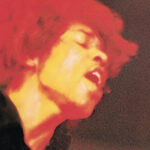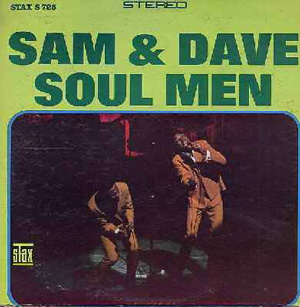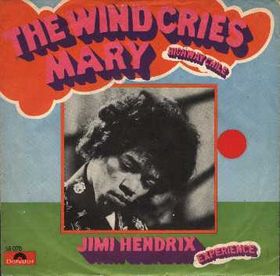 When Jimi Hendrix unleashed “Voodoo Child (Slight Return)” on the world in 1968, he wasn’t just closing out an album—he was rewriting the very definition of what a guitar could do. The final track on Electric Ladyland feels like the musical equivalent of lightning striking the earth. It’s raw, spiritual, dirty, transcendent, and somehow both primal and futuristic. Nearly six decades later, “Voodoo Child” still stands as one of rock’s purest displays of energy—a supernatural force that seems to pour directly out of Hendrix’s fingers and into the air.
When Jimi Hendrix unleashed “Voodoo Child (Slight Return)” on the world in 1968, he wasn’t just closing out an album—he was rewriting the very definition of what a guitar could do. The final track on Electric Ladyland feels like the musical equivalent of lightning striking the earth. It’s raw, spiritual, dirty, transcendent, and somehow both primal and futuristic. Nearly six decades later, “Voodoo Child” still stands as one of rock’s purest displays of energy—a supernatural force that seems to pour directly out of Hendrix’s fingers and into the air.
This isn’t just a guitar song. It’s a statement of being, an anthem, a spell. Hendrix transforms himself into the mythic “voodoo child,” a figure that straddles the human and the divine. The lyrics, minimal and mystical, make him sound like he’s half bluesman, half deity: “Well, I stand up next to a mountain, and I chop it down with the edge of my hand.” It’s boastful, sure, but it’s also metaphysical—a blues-rooted declaration of cosmic power. And the music behind it? That’s the sound of the universe bending.
The Sonic Earthquake
The first sound you hear is that unmistakable wah-wah pedal. It moans, cries, and laughs all at once, setting the tone for what’s to come. That pedal became Hendrix’s signature weapon, and in “Voodoo Child,” he wields it like a sword. Each flick and bend feels alive, like the guitar itself is speaking an ancient language.
The rhythm section—Noel Redding on bass and Mitch Mitchell on drums—locks into a heavy, hypnotic groove that feels both loose and unstoppable. Mitchell’s drumming is pure chaos disguised as control, throwing fills and accents around Hendrix’s riffs like lightning sparks. The trio doesn’t just play a song; they create a storm.
And at the center of it all is that riff. It’s one of the most recognizable in rock history: deep, slinky, and full of swagger. It moves like a serpent, sliding between power chords and lead licks, always threatening to burst into flames. Hendrix plays it with effortless authority, his tone thick and buzzing like an electric current through the soul of the blues.
There’s something almost ritualistic about it. The groove builds and releases like waves of energy, and by the time Hendrix begins to sing, you’re not just listening—you’re part of the spell.
The Voice of a Shaman
Hendrix’s vocals on “Voodoo Child” are unlike anything else in his catalog. He’s not crooning or screaming; he’s conjuring. His delivery is cool and confident, but underneath there’s this sense of possession—as if the music is speaking through him.
When he sings “If I don’t meet you no more in this world, then I’ll meet you in the next one,” it lands like a prophecy. There’s a ghostly quality to it, almost as if Hendrix already knew how brief his time on earth would be. Recorded in 1968, just two years before his death, “Voodoo Child” feels eerily like a farewell letter written in thunder.
That lyric alone gives the song its immortality. It’s not just a cool line—it’s Hendrix laying out his philosophy. Life, death, power, and spirit all flow together. He’s both mortal and myth, existing in the liminal space between heaven and the stage.
This is what makes Hendrix so singular: while other guitar heroes showed off, Hendrix channeled something. “Voodoo Child” feels less like a song he wrote and more like one he summoned.
The Blues Reborn
At its core, “Voodoo Child” is the blues—just electrified, stretched, and exploded. Hendrix grew up on Muddy Waters, Howlin’ Wolf, and B.B. King, and those influences run deep here. The riff structure, the call-and-response phrasing, the emotional grit—it’s all classic Delta blues. But Hendrix takes that foundation and blasts it into the stratosphere.
He doesn’t just modernize the blues; he mythologizes it. The “voodoo” imagery connects to the spiritual side of African American folklore—the idea of power drawn from unseen forces, of transcendence through rhythm and ritual. Hendrix transforms that concept into a cosmic experience.
Every time he bends a note, you can feel the lineage—from Robert Johnson’s haunted slide guitar to Muddy Waters’ electric growl to Hendrix’s psychedelic fury. “Voodoo Child” is the evolution of the blues told in one roaring song.
And yet, despite its heaviness, it swings. The groove is undeniable, danceable even. This isn’t doom and gloom—it’s exultant, ecstatic, alive. Hendrix understood that the blues wasn’t about sadness; it was about survival.
The Studio Magic
The recording of “Voodoo Child (Slight Return)” took place at the Record Plant in New York City. Unlike the sprawling jam version (“Voodoo Chile”) recorded earlier with Steve Winwood and Jack Casady, this take was tight, sharp, and focused. Legend has it that Hendrix recorded it almost as an afterthought—when a television crew arrived to film the band, he decided to cut a quick, punchier version of the original.
That spontaneity is part of its magic. You can hear it in every second—the unpolished grit, the live-wire energy, the feeling that the whole thing could fly off the rails at any moment but never does. Hendrix was notorious for his improvisational genius, and this recording captures it perfectly.
He wasn’t just playing notes; he was painting sound. Each flick of the volume knob, each burst of feedback, each wah-soaked phrase adds texture and emotion. His guitar becomes an extension of his body, his voice, his spirit.
What’s even more impressive is how full the song sounds despite being a trio performance. There’s no studio trickery, no overdubbed wall of sound—just three musicians locked in pure creative combustion.
The Power of Reinvention
Hendrix’s genius wasn’t just technical—it was imaginative. He reimagined the guitar as an orchestra of emotion. In “Voodoo Child,” he uses distortion and feedback not as noise but as language. The squeals, hums, and growls all carry meaning.
It’s the sound of rebellion, of self-expression unbound by rules. At a time when rock guitar was still finding its vocabulary, Hendrix was writing poetry in electricity. Every generation of players since—from Stevie Ray Vaughan to Prince to John Frusciante—owes something to this track.
When Stevie Ray Vaughan covered “Voodoo Child” in the ’80s, it was both tribute and proof of how deep Hendrix’s influence ran. Vaughan played it with reverence, but even his fiery version couldn’t replicate the ghostly energy of the original. That’s because Hendrix’s performance feels possessed—it’s not just human skill, it’s spiritual release.
Cultural Earthquake
When Electric Ladyland hit in late 1968, the world was already trembling with change. Civil rights protests, the Vietnam War, and counterculture movements had pushed art into new territory. Hendrix—Black, British-based, and spiritually rooted in the American South—stood at the crossroads of that revolution.
“Voodoo Child” became his personal anthem, but it was also an anthem for defiance. It spoke to power, identity, and self-determination in ways that resonated across race and generation. The “voodoo” metaphor wasn’t random—it carried the weight of cultural reclamation. Hendrix was flipping old stereotypes about voodoo’s “darkness” into something empowering, mystical, and proud.
When he performed the song live, it often turned into a battlefield hymn. His legendary performance at Woodstock in 1969—where he opened with “Voodoo Child” and merged it into his psychedelic version of “The Star-Spangled Banner”—cemented it as both art and protest. It was as if he was channeling the spirit of a new America through six strings and fire.
The Ultimate Live Song
While the studio version is immaculate, “Voodoo Child” became truly immortal on stage. Hendrix treated it like a living organism—changing solos, stretching riffs, and turning each performance into a new ritual.
No two versions sound the same. Sometimes he’d drag the intro out for minutes, teasing the crowd with slow, molten bends. Other times he’d explode straight into it, unleashing a torrent of notes that sounded like an electric storm breaking loose.
His Band of Gypsys era renditions took it even further—deeper grooves, more distortion, and a heavier, funkier energy. By then, “Voodoo Child” had evolved into something beyond a song. It was Hendrix’s personal invocation, a summoning of his musical spirit every time he stepped onstage.
When he performed it in Maui in 1970, under a blue Hawaiian sky, the footage looks like something from another dimension—Hendrix in his element, bathed in sunlight and distortion, playing like he was channeling the earth itself.
The Myth and the Man
Part of what makes “Voodoo Child” so powerful is how perfectly it aligns with Hendrix’s myth. After his death in 1970, the song took on new meaning. That lyric about meeting in the next world suddenly felt prophetic, eerie, and heartbreakingly real.
It’s hard not to hear “Voodoo Child” as his self-portrait—a song that captures his contradictions: confident but introspective, fiery but graceful, human but supernatural. He wasn’t pretending to be a god; he just happened to play like one.
Even now, his influence feels boundless. Every guitarist who plugs into an amp and tries to make it scream owes a silent debt to this song. It’s the source code for guitar rebellion.
Timeless Electricity
What’s miraculous about “Voodoo Child” is how fresh it still sounds. Plug it into a playlist today, and it still rips right through everything else. The tone, the groove, the attitude—it’s as modern as anything released decades later.
That’s because Hendrix wasn’t just of his time; he was ahead of it. He envisioned sounds nobody else could imagine, and “Voodoo Child” is his masterpiece of imagination. It’s blues, it’s rock, it’s funk, it’s pure energy condensed into six minutes of perfection.
And unlike so many songs from the psychedelic era, it doesn’t feel trapped in its moment. It transcends nostalgia. It’s eternal.
Final Thoughts
“Voodoo Child (Slight Return)” is the ultimate Hendrix track because it embodies everything that made him transcendent—his technical brilliance, his spiritual depth, his revolutionary vision, and his sheer, unfiltered emotion. It’s the sound of a man and a machine fusing into one unstoppable force.
Every time the wah-wah pedal cries, every time that riff drops, every time Hendrix declares his cosmic strength, it’s like hearing rock and roll being reborn in real time.
Some songs age; this one burns forever. It’s the eternal lightning bolt of guitar-driven music—the song that refuses to fade, that still shakes the air, that reminds us why Jimi Hendrix wasn’t just a musician, but a living myth.


